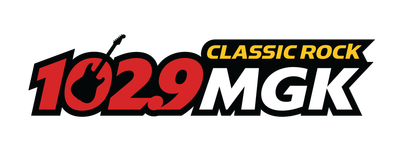A Look At The Beatles’ Album ‘Revolver’ On Its Anniversary
The Beatles’ album, Revolver, released on August 5, 1966, in the UK. It was then released on August 8, 1966, in the US. Over 50 years later, the record still…

Photo by Evening Standard/Getty Images
Photo by Evening Standard/Getty ImagesThe Beatles' album, Revolver, released on August 5, 1966, in the UK. It was then released on August 8, 1966, in the US. Over 50 years later, the record still holds up as one of the most revolutionary rock records of all time.
Strenuous years of touring came to a boiling point in The Beatles' disastrous 1966 World Tour. Bad sound systems, riotous Beatlemania, and poor concert organization left the group utterly exhausted. So much so, that the band departed from touring. In fact, they departed from live performances altogether, at least for the time being.
This break from the madness sent the group into the studio. Not held by the constraints of being able to actually perform any of their new music, The Beatles found liberation in innovation.
Thus, the band's seventh studio album, Revolver, was born. The first recordings released from the sessions, engineered by Geoff Emerick, "Paperback Writer" and "Rain" gave an indication of what was to come.
Having more time and the ability to experiment in the studio paid off. John Lennon and Paul McCartney were able to flaunt true creativity and innovation. George also made his mark, with three of his compositions appearing on a Beatles album for the first time. The album entered the UK charts at number 1, where it stayed for 7 weeks out of an impressive overall run of 34 weeks.
The album's artwork came from the brilliant Klaus Voormann, a German artist and the band's friend from their Hamburg days. It's psychedelic. It's eclectic. It marked and totally exemplified the new era of The Beatles. One of complete artistic representation.
The Beatles' album, Revolver, marked a shift in the popular music landscape. It was not bound to the constraints of any norms. It cemented its place as a legendary album in the rock music zeitgeist.
Here's a look at each song on the monumental record for this, its 57th anniversary:
"Taxman"
This song, largely critical of the British government’s taxation system, kicks off the album. It was one of George Harrison’s first solo songwriting ventures. George Harrison was inspired by just how much of The Beatles’ earnings were going straight to the Treasury. Helped along by a few one-liners from John Lennon, the song masterfully incorporates the names of real-life politicians in a witty, tongue-in-cheek way.
"Eleanor Rigby"
Paul McCartney isn’t exactly sure how the coincidence happened, but it turns out that there was, in fact, a real Eleanor Rigby. Just yards away from where John Lennon and Paul McCartney met at a church fete in Liverpool back in 1957, there lies a graveyard. In that graveyard, you will find an actual headstone of a woman called “Eleanor Rigby,” who died in 1939. Paul McCartney maintains that the headstone had no influence over the song at the time he was writing it, but his frequent visits to the church as a child may have placed it deep in his subconscious. “I just liked the name,” Paul said in 1984.
"I'm Only Sleeping"
It was a well-known fact among those close to John Lennon that he liked to sleep. A lot. The song’s lyrical content was largely inspired by Paul McCartney’s habit of having to wake Lennon up from naps for afternoon songwriting sessions. The Beatles, having stopped touring, found themselves in an entirely different dilemma than they were used to. Rather than being on the go with chaotic schedules, they had almost nothing to do. Besides writing music, of course.
"Love You To"
This venture into incorporating sitar into a Beatles song changed the way George Harrison saw songwriting forever. While not his first stab at it...that was on "Norwegian Wood (This Bird Has Flown)"...it was the first time The Beatles would release an entire song in Classical Indian style. At the time George Harrison was learning the sitar from Ravi Shankar, who inspired him to learn more about Indian music and Eastern religion. This song's lyrics exemplify George's interest in spiritualism and sitar itself.
"Here, There And Everywhere"
This is often cited as one of Paul McCartney's finest love songs, and actually one of his personal favorites. It was written as Paul sat beside the swimming pool at John Lennon's home. McCartney was actually, ironically enough, waiting for Lennon to wake up. He finished the song before the nap was over. Despite not helping in the composition, Lennon had said that this was one of his favorite Beatles songs.
"Yellow Submarine"
Most people forget, due to the later album and subsequent film, that “Yellow Submarine” first belonged to Revolver. The B-Side to "Eleanor Rigby" served as a bright spot on the album, in stark contrast to its A-Side. The Lennon-McCartney composition, fronted by Ringo Starr, featured many fun recording tricks. For one, John Lennon blew bubbles into a bucket of water, and chains were dragged around in a full bathtub, to achieve that underwater sound. They received “a little help from their friends” on this tune, too. Brian Jones, Marianne Faithfull, and Donovan were among the big names that provided sound effects and backing vocals to the iconic track.
"She Said She Said"
This was the final track recorded for Revolver. The album would surely not be the same without it. The song was written after a 1965, LSD-fuelled conversation that left John Lennon a bit shaken. It’s said that Peter Fonda was comforting George Harrison, who was tripping and thought he may be dying at a party. He assured Harrison by repeating “I know what it’s like to be dead.” In truth, Peter Fonda did know, as an incident with a gun when he was 10 years old nearly killed him. Lennon, upon hearing this phrase, was inspired by how weird it made him feel inside. Thus, “She Said She Said” was born.
"Good Day Sunshine"
“Good Day Sunshine,” upon its release, joined the club of sun-related songs from the year 1966. Inspired by The Lovin’ Spoonful’s “Daydream,” and The Kinks’ “Sunny Afternoon,” Paul McCartney felt it only appropriate to get in on the sunny motif. The summer of 1966 was a hot one, but Paul framed it in such a classic, feel-good way.
"And Your Bird Can Sing"
Many speculate that this song was born out of the “rivalry” between The Beatles and their contemporaries, The Rolling Stones. Lennon, ever the cryptic lyricist, found himself in fine form while writing “And Your Bird Can Sing.” The titular “bird” may be a reference to Marianne Faithfull, who was in a much-publicised relationship with Stones front man Mick Jagger at the time. “Tell me that you’ve got everything you want / And your bird can sing,” is said to be a dig at Jagger. Likely, though, the obtuse lyrics were probably Lennon trying to emulate Bob Dylan, whom he looked up to greatly.
"For No One"
The sad nature of this song helped Paul McCartney find inspiration to experiment with a new instrument. The French horn feature on this song distinguishes it greatly from other songs on the album. “For No One” is helped along also by baroque-style piano. It’s a melancholy story about the end of a love affair. What happens when someone falls out of love? The exploration falls in line with McCartney’s other character-based songs.
"Doctor Robert"
“Doctor Robert” is notable for featuring The Beatles’ first explicit mention of drugs in a song. The Lennon-written tune had many speculating which real-life “Doctor Robert” was being referenced. In truth, it was likely no one, and the name “Robert” simply fit the rhythm best. It is ironic, though, that a doctor (rather, a dentist) did introduce the band to LSD in 1965, a development that would change their careers forever.
"I Want To Tell You"
This is the third George-fronted track on Revolver, making this, in 1966, the record with the most George features to date. All four Beatles have some part in this song. “I Want To Tell You” is about an “avalanche” of thoughts Harrison was experiencing, but had a hard time putting into words.
"Got To Get You Into My Life"
Motown-influenced pop number “Got To Get You Into My Life” is not actually a love song. In fact, it’s about one of McCartney’s new love interests at the time, Mary Jane (known more commonly as marijuana). The horns in this song help it go down as one of Paul’s best pop standards. The clever, double-entendres in the lyrics exemplify just what The Beatles could do as songwriters.
"Tomorrow Never Knows"
When The Beatles stopped touring, they knew they could experiment more in the studio. “Tomorrow Never Knows” is probably the best example of that. The title comes from one of Ringo’s famous malapropisms, another earlier example being “A Hard Day’s Night.” Other lyrics in the song come from a book John Lennon was reading at the time, The Psychedelic Experience, which contained an adaptation of the ancient Tibetan Book Of The Dead. In the studio, the band worked wonders with a reel-to-reel tape machine. Tape loops, reversed guitar riffs, and thunderous drums help transport the listener to a feeling of hypnosis. Engineers, for the second half of the song, ran Lennon’s voice through a revolving Leslie speaker, more commonly used with Hammond organs. It is one of The Beatles’ great in-studio creative triumphs, and is the perfect closer for the album, almost ushering them into the Sgt. Pepper era.








